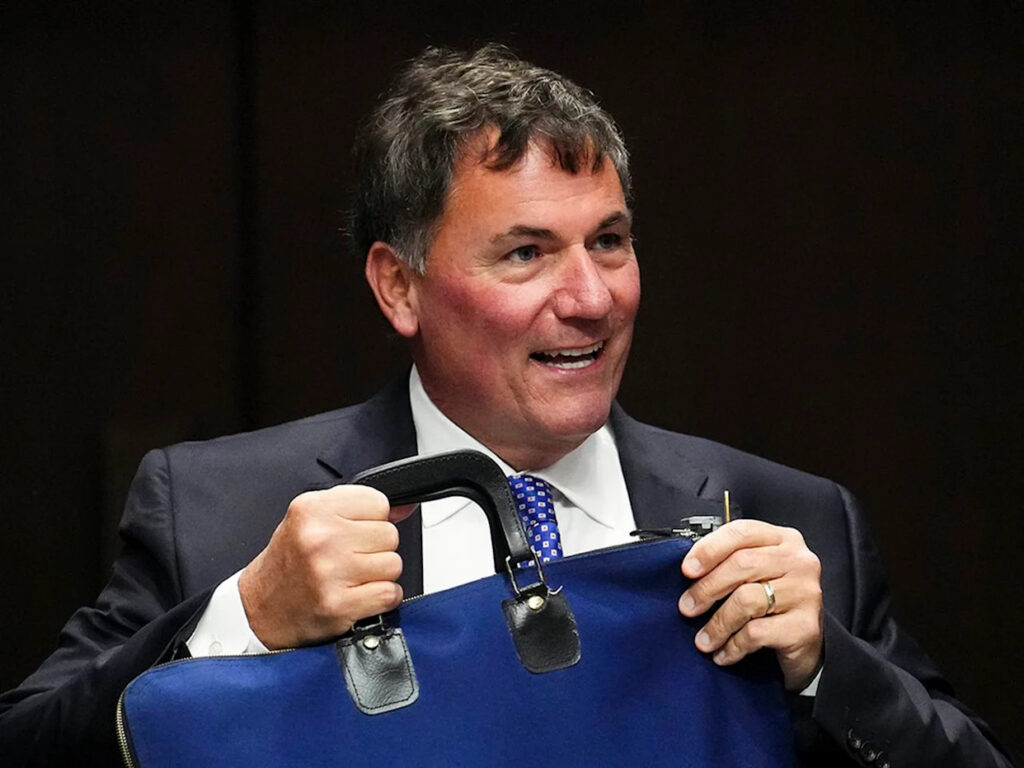
URGENT UPDATE: Canada is facing escalating trade tensions as President Donald Trump threatens new tariffs on Canadian goods, including a staggering 25% levy on cabinets and furniture and an additional 10% on softwood lumber. This latest development could push the effective tax to a shocking 45%, severely impacting Canadian industries and consumers.
The ongoing negotiations surrounding the Canada-U.S.-Mexico trade agreement are at a critical juncture, with opposition parties criticizing the government for its lack of a robust response. Conservative Leader Pierre Poilievre has slammed the Carney government for being “trampled” by the Trump administration’s aggressive trade policies.
As Trump continues to pressure Canada, even suggesting it should “join our country and become 51,” Canadian officials are urging patience among voters. Dominic LeBlanc, Minister responsible for cross-border trade, spoke on the matter during a Senate committee meeting on Thursday, emphasizing a strategy that mixes American self-interest with Canadian resilience.
LeBlanc highlighted conversations with U.S. Commerce Secretary Howard Lutnick, focusing on the U.S. section 232 national security tariffs affecting steel, aluminum, copper, and autos. He underscored the need for a viable Canadian steel and aluminum industry, which he argues is essential for U.S. national security.
“We are confident that domestic pressures will create an opportunity to come to an agreement that benefits both economies,” LeBlanc stated, reinforcing the urgency of the situation.
The economic landscape in the U.S. is shifting rapidly, with inflation rising to 2.9% as of August, driven by increasing prices for food, shelter, and used vehicles. The 10% rise in aluminum prices since April is directly linked to Trump’s tariffs, as Canadian producers seek alternative markets. Lumber futures have also climbed 15% this year, raising concerns among homebuilders about escalating housing costs.
The labor market is showing signs of strain, with the unemployment rate at 4.3% and a slowdown in job growth, marking the slowest four-month period since the global financial crisis. As Trump’s tariff policies come under scrutiny, the Supreme Court is set to hear arguments on November 5 regarding the constitutionality of these tariffs, which could significantly alter the trade dynamics if deemed unjustified.
Amidst these challenges, Canada is not sitting idle. The government is actively pursuing trade diversification strategies, recently launching the Defence Investment Agency to strengthen ties with allies like the U.K., France, and Australia. Canada has also signed a trade deal with Indonesia, expected to emerge as a major economic player by 2030, and is seeking to deepen bilateral relations with Mexico and China.
LeBlanc stressed that while the current trade dispute with the U.S. is resolvable, it is crucial to acknowledge that the relationship has fundamentally changed. “We can use this moment to become less dependent and more resilient,” he stated.
As Canada braces for potential fallout from escalating tariffs and a changing trade environment, the message from officials is clear: while there may be no quick fixes, the country is prepared to leverage its resources and relationships to navigate these turbulent waters.
Canadians are urged to stay informed and engaged as developments unfold in this high-stakes trade negotiation that could reshape the economic landscape for both countries.





